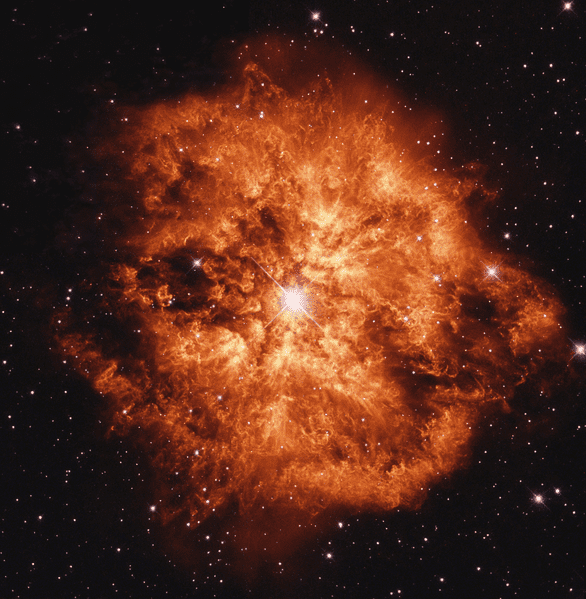Astronomers have captured a glimpse in the life of a massive star, a brief transitory stage in its evolution that might reveal the secrets of a unique class of stars.
It’s called Nasty1, a name derived from its catalogue name, NaSt1; but the name is quite fitting, considering that the star itself has a pretty erratic behavior. Nasty1 is part of a class named Wolf-Rayet stars – evolved, massive stars with very high surface temperature and strong surface winds.
Wolf-Rayet stars start out big, 20 times (or more) bigger than the Sun, but due to their nature, they start ejecting layer after layer, but astronomers are not sure exactly how this process happens, because it happens really fast (in astronomical terms). Another idea holds that the outer layers are siphoned off by a cannibalistic companion star.
“That’s what we think is happening in Nasty 1,” study lead author Jon Mauerhan, of the University of California, Berkeley, said in a statement, referring to the second hypothesis. “We think there is a Wolf-Rayet star buried inside the nebula, and we think the nebula is being created by this mass-transfer process. So this type of sloppy stellar cannibalism actually makes Nasty 1 a rather fitting nickname.”
Now, Hubble captured some images which seem to support the cannibalistic theory.

An artist’s conception depicts an immense disk of gas surrounding a massive, bright Wolf-Rayet star (at center). NASA, ESA, AND G. BACON (STSCI)
“There are very few examples in the galaxy of this process in action because this phase is short-lived, perhaps lasting only a hundred thousand years, while the timescale over which a resulting disk is visible could be only ten thousand years or less.”
The decisive factor seems to be the ejection – it simply doesn’t happen fast enough to justify observations.
“We’re finding that it is hard to form all the Wolf-Rayet stars we observe by the traditional wind mechanism, because mass loss isn’t as strong as we used to think,” co-author Nathan Smith, of the University of Arizona, said in the same statement. “Mass exchange in binary systems seems to be vital to account for Wolf-Rayet stars and the supernovae they make, and catching binary stars in this short-lived phase will help us understand this process,” Smith added.










